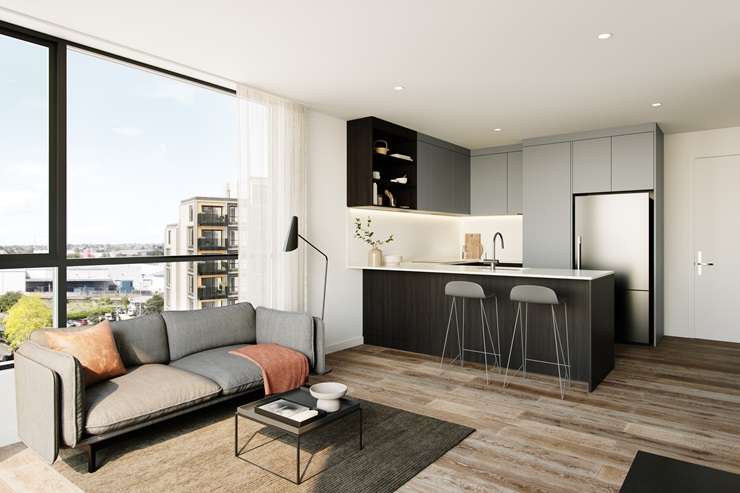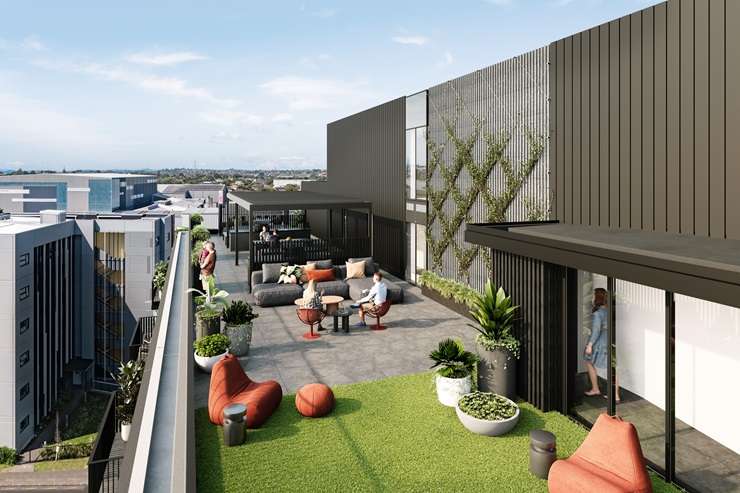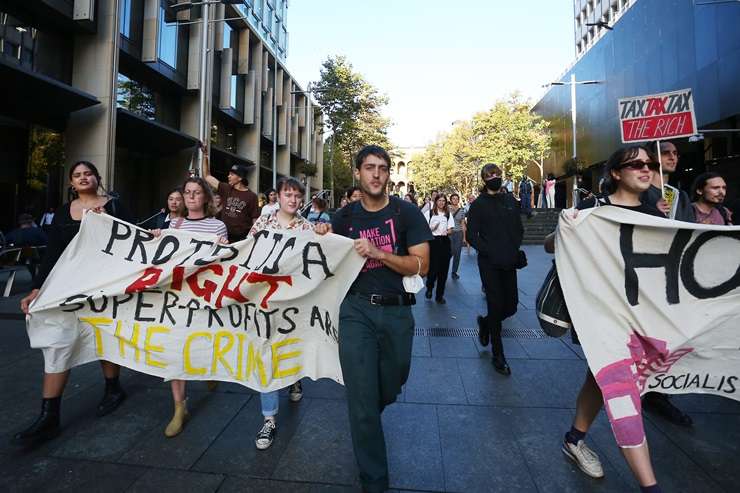New Zealand’s emerging build-to-rent sector may play a role in combatting a rental crisis similar to that being seen in Australia, but a New Zealand economist warns the country needs to get other elements of the housing shortage fixed first.
In September, news.com.au reported vacancy rates across the Tasman were dropping to historic lows with rents setting off “for the moon”.
Also that month RNZ reported a chronic shortage of rental stock was reaching a crisis point in Auckland with a 10-fold increase in people looking for accommodation in six months.
Part of the solution could be build-to-rent, says Kiwi Property spokesperson Campbell Hodgetts.
Start your property search
The developer is building a big build-to-rent project at Sylvia Park called Resido, which is due to open mid next year.
Described as New Zealand’s first build-to-rent community, there will be 295 apartments available for long-term rent with tenancies offered for up to 10 years, and pets – often a big no in rental properties – are welcome, too, within limits (“it’s a medium-sized dog, it's not a Great Dane”).
Read more:
- Tony Alexander: 119,000 reasons for an early rate cut ... but there's a downside too
- Cries for help as Queenstown rental crisis spreads to other NZ holiday spots
- ‘Shocking’: What the Australian housing market is really like for Kiwis
Hodgetts said build-to-rent was different to other rental models because it was purpose-built for long-term renting rather than the more traditional “mum and dad” investors who might have a couple of rental properties.
The model offers typically high-quality accommodation and there is security around rental increases so tenants have consistency and know what the rent will look like one year to the next.
He said the same rules apply as under the Residential Tenancies Act. If tenants meet the criteria of being a good tenant, landlords are likely to want them to stay as long as they would like, and because of the visibility around rent increases there won’t be nasty surprises.
Hodgetts said Kiwi Property is focused on offering great amenities for tenants and so the Sylvia Park building has a gym, a co-working space and a rooftop deck and barbecue area.
“We’re really trying to provide greater amenity so people can put down roots, form a community and obviously have access to Sylvia Park and all the shopping and dining and public transport right next door.”
There is a widespread acceptance that New Zealand, like Australia, needs more homes and a big increase in net migration is putting more pressure on, Hodgetts said.

An artist's impression of one of the Resido apartments. The units are soon to hit the market. Photo / Supplied

The Resido development is big on shared spaces and high-end amenities. Photo / Supplied
“A lot of people are struggling to find affordable housing and so I think what we need to look at is a suite of solutions that are going to help contribute to reducing the housing shortfall and we think build-to-rent could be a really important part of that.
“It’s obviously early days and build-to-rent is just starting to take off but we would like to see it really scale up and provide a great option for people that are in rental accommodation because not only will that help provide more homes that are much needed for Kiwis it also provides high quality accommodation which is one thing people really need and people deserve.”
Kiwi Property also has resource consent for a mixed-use tower at Lynn Mall, and Hodgetts said there was scope for hundreds more build-to-rent apartments at Sylvia Park.
“The reality is at the moment about half of Aucklanders over the age of 15 live in rental accommodation,” he said.
“That number is expected to go up to about 60% by 2043 so there’s going to be more people looking for good quality rental accommodation and we think that build-to-rent could offer an important role.”
Tamba Carleton, associate director research with CBRE, said New Zealand’s rental situation was already similar to Australia’s with both countries experiencing very high net international migration which was growing populations at a near-record rate.

Housing affordability and rents have become a flash point issue in Australia, with many tenants taking to the streets in 2023 to protest rent increases. Photo / Getty Images
Demand is exceeding supply and in the Auckland apartment market vacancy is extremely low at 1%.
Build-to-rent is a way to bring supply to market with purpose-built rental accommodation that is warm, dry and with security of tenure, she said.
“This is really important in the Auckland market where 10 years prior to the amendment of the Residential Tenancies Act it was quite precarious.
“Your landlord could sell the house vacant possession and then you have to move – this was really an issue prior to the amendment of the act – people being booted out of their homes.
“What built-to-rent offers is a home for life if you want it.”
Carleton also said an advantage was transparency around rent increases, and she said for landlords to be able to get interest deductibility benefits they have to offer a 10-year lease, a great option for families who want their children to have stability of schooling, and to have a pet.
“It’s actually in the landlord’s interests to allow their tenants to have a pet because they’re going to stay longer.”

CBRE associate director of research Tamba Carleton: “What built-to-rent offers is a home for life if you want it.” Photo / Supplied
She said landlords in New Zealand tend to be local developers and investors, and as the model grew more listed property entities and corporations were signing up.
Auckland has eight build-to-rent projects with five under construction, Carleton said. Another three have building consent issued, and a project in Tauranga also has building consent issued.
While the build-to-rent model is a positive, Gareth Kiernan, chief forecaster/director with Infometrics, said its emergence probably reflected the big cost of housing in this country.
With house prices having risen substantially since Covid, followed by the high interest rates, growth in renting had been forced up, he said.
“New Zealand is getting to a size where it does start to become a viable opportunity for institutional investors to enter more into that build-to-rent area than we might have seen in the past.”
But build-to-rent won’t solve the housing issues on its own.
“We've still got a big state house waiting list, which is probably the most obvious symptom of where we are at.”
The incoming government has talked a lot about trying to improve the supply of housing and free up some of the constraints and bottlenecks which have potentially stopped it, Kiernan said.
“In the near term (in the next five years) it’s more about looking at the provision of infrastructure and the supply of land and that sort of thing.
“If you can get that right, then I think the build-to-rent situation does become a new component of a more balanced housing market – but you have to get those other bits in place first.”
- Click here to find properties to rent
















































































